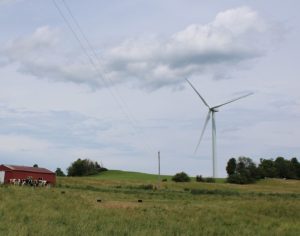Calling them “a major contributor to global-climate change,” Gov. Andrew Cuomo on Thursday proposed revised regulations to reduce “harmful” power-plant emissions.
The proposed regulations would lower the emissions cap under the nine-state Regional Greenhouse Gas Initiative (RGGI) and would serve as a “national model” for reducing the emissions from power plants, the governor’s office said in a news release.
The proposal also fulfills a “commitment” made in the governor’s State of the State address earlier this year, according to Cuomo’s office.
(Sponsored)

Ask the Expert: How Companies Can Future-Proof Their Workforce
In today’s landscape, workforce challenges are more pressing than ever. Across New York and beyond, companies are grappling with unfilled positions, skills gaps, and increasing turnover. These challenges can slow

Working Another Job While on FMLA Leave is Not Necessarily Misconduct
Imagine this. You have an employee who is on leave pursuant to the Family and Medical Leave Act (FMLA) and you discover that the employee is working for another employer.
“In the last several years New Yorkers have faced more natural-weather disasters than our state has faced in decades, making clear the consequences of ignoring global warming,” Cuomo said in the news release.
“The consequences of ignoring our changing climate are undeniable. From Hurricane Irene to Superstorm Sandy, these experiences have provided vivid reminders of the dangers of our changing climate and the need for immediate action. RGGI serves as a national model for combating climate change and proves that it is possible to significantly reduce greenhouse-gas pollution while promoting job growth and a vibrant economy. With the goal of lowering the emissions cap, New York is taking a decisive step to reduce pollution and better protect the environment,” Cuomo said.
RGGI was the nation’s first program to use an “innovative” market-based mechanism to cap and “cost-effectively” reduce the outflow of carbon dioxide (CO2) that causes climate change, Cuomo’s office contends.
Under the program, emission allowances are sold at auctions and the proceeds are reinvested in projects that support clean-energy technologies and greater energy efficiency, and help lower consumer-energy bills while driving reductions in greenhouse- gas pollution, according to the governor’s office.
From 2005 to 2012, the region saw a 40 percent decline in greenhouse gas pollution from power plants, the governor’s office said.
The proposed revised regulations would “lock in” that reduction by lowering the regional cap from 165 million tons of CO2 to 91 million tons of CO2, which is more closely aligned with current-emissions levels, Cuomo’s office said.
To achieve further pollution reductions, the cap would decline an additional 2.5 percent annually through 2020, and additional adjustments will account for unused allowances that are still in the marketplace.
The cumulative-regional effect of the lower cap is an estimated reduction of 86 million tons of CO2 emissions, equivalent to taking over 16 million cars off the road for one year, according to the governor’s office.
The rule modifications follow a two-year program review that the nine RGGI states conducted. The changes are based on electricity-system analyses, macroeconomic modeling, and “extensive” dialogue with stakeholders, the governor’s office said.
The governor has submitted the proposal to the New York State Department of Environmental Conservation (DEC). The state published the proposed rule modifications in the New York State Register and the DEC’s Environmental Notice Bulletin on July 10.
The public has a 60-day period in which to comment on the proposed regulations, according to the governor’s office.
Contact Reinhardt at ereinhardt@cnybj.com



